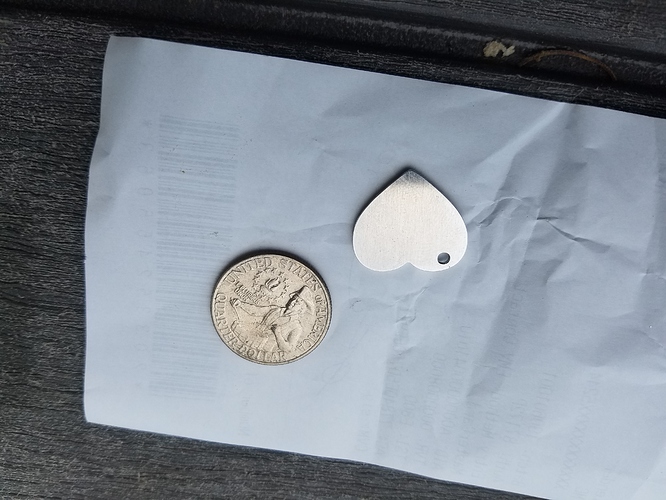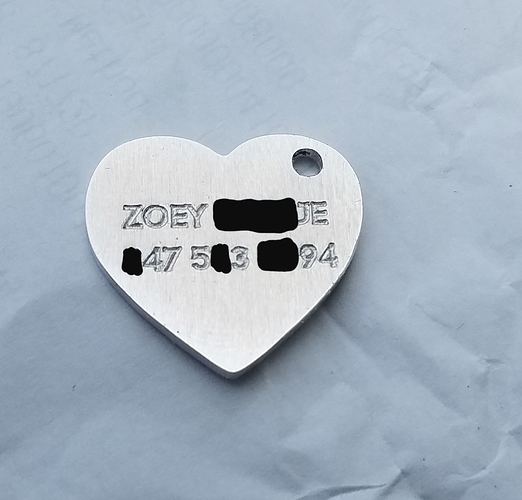Wanted to make a necklace with an identifier on it. 5052 aluminum turned out more difficult than anticipated. Had to use wd40 and ai blast to clear the chips for the 1/32 2 flute. Broke one bit before that realization. Used 90 degree v for engraving. Made on xxl.
Thumbs up for making a quarter-sized pendant…on an XXL 
Just curious, what feeds and speeds did you use for the V carving ?
That’s not V-Carved < and lots more characters >
It is v-carved with a Harvey 1/4 90 degree drill mill. It was 5 ipm feed 3 ipm plunge.I should have used wd40 on it too I think.
What was the RPM ?
(just trying to figure out the chipload for Vbits myself)
I wonder if going (much) faster would not grant a sharper result, but then again this is so small that accelerations would be an issue I guess.
Forgot to include it. I was around 12500rpm on the makita. The 5052 was much more gummy than 6061 I’d done in the past. Not sure how faster would turn out.
Sorry I meant faster feedrate. Faster feedrate at same RPM => larger chipload => less chances of a gummy cut
The tip is all gummed up then - that looks more like it was done w/ a 1/32" endmill.
Tip is good, the 5052 did not cut as expected. The 1/32 mill produced similar results until I added wd40 into the mix.
5052 is gummy, nature of the beast. It also work hardens, which will make the cutting worse if you’re not making good fat clean chips. Slower likely not better in this case (I’m talking about feeds, not router speed).
Dan
I used some 5000 series aluminium, common in sheet stock at my suppliers. The stuff is super gummy and not ideal for machining, usually try to avoid this one on your CNC. You could try repeat the design on some 6061-T5, its nice and hard for the machining process and can often be machined nicely dry with air assist to clear chips from recutting and welding back into the work.
Its best to use a new endmill for optimium results if your previous one gummed up. They can be cleaned, if the welding is severe you can soak them in sodium hydroxide (drain cleaner) and dissolve off the alu, just do it with good ventilation. This gives the endmill some re-usability but still not quite as good as a new one.
I would sasy most of your issues you described are related to the stock. Aluminium like to be cut in larger chips, general rule slower RPM, faster feedrate = less heat and less gummy.



